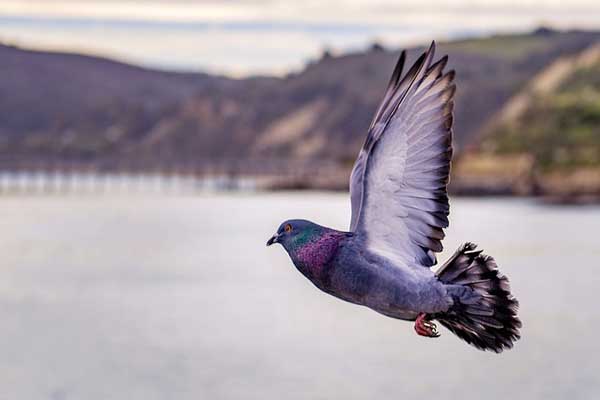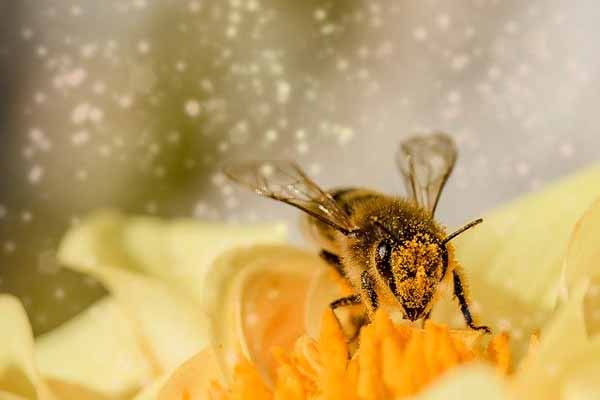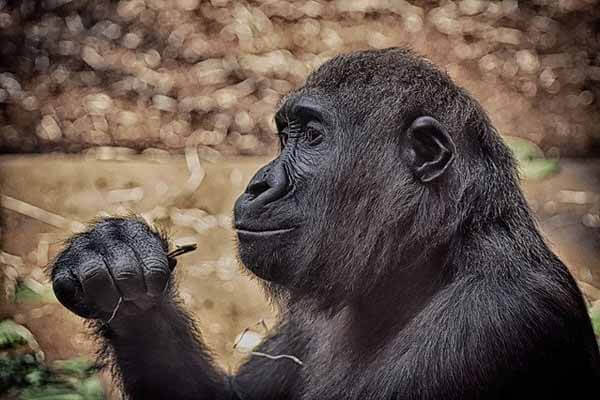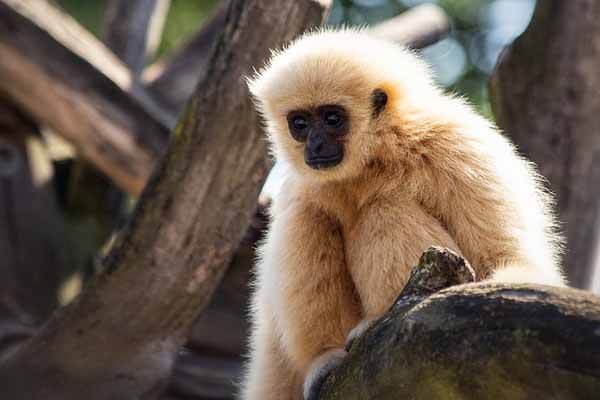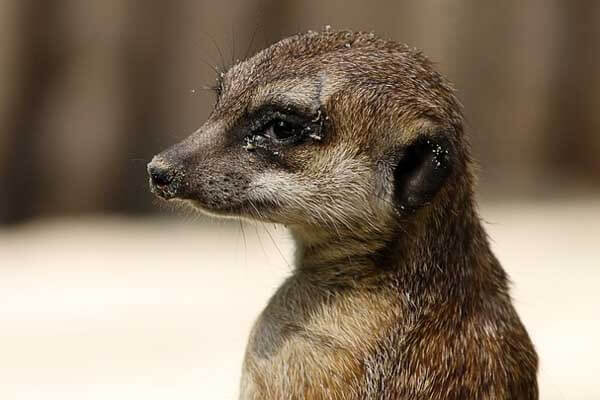Pets can be not only fluffy cats, friendly dogs, and talkative parrots.
Some people keep in their homes an exotic reptile – chameleon. This unusual pet requires special conditions of detention, proper care, and a special chameleon diet, which has a certain value for the reptile organism.
In this article we will consider the peculiarity of the chameleon diet, what kind of food they can and should not be given, in what quantity, the peculiarity of the drinking regime.
Chameleon diet in wildlife
In natural conditions, chameleons feed on various insects, chicks, small lizards, and other mammals.
The main part of the daily diet is insects – spiders, crickets, worms, flies, caterpillars, etc. Smart animals do not eat stinging and poisonous insects. Even if the reptile is very hungry, it will not hunt for a potentially dangerous victim.
Fruits of trees and green leaves make up a small part of the diet.
Chameleon diet at home
Exotic lizards living at home need a special diet. Reptiles can not eat the usual foods typical for the human table. Even though a certain part of the menu is still vegetables and fruits, the priority food for a chameleon is the food of animal origin.
Animal products for chameleons are insects. The most useful food is crickets and locusts.
What other insects can be fed chameleon:
- fodder cockroaches;
- grasshoppers;
- flies;
- spiders;
- dragonflies;
Superworm, wax moth larvae, and flour worms can be given 3-4 times a month (frequent feeding of these insects may cause liver failure).
Chameleons of large species can be fed to small mice. Such treatment should not be given to the pet for more than 2 times a month.
Vegetable food and vitamin supplements
Homemade lizards can be fed with plant food – green leaves, vegetables, fruits of some species.
What can be given to chameleon:
- green salad leaves;
- dandelions;
- grapes;
- cherries;
- bananas;
- melons and watermelons;
- tangerines, oranges;
- kiwi.
Special mineral and vitamin supplements are created for home reptiles, which are necessary to ensure a complete diet and maintain physical health.
Useful vitamins for chameleons:
- Calcium is a very important element for the body of reptiles. It strengthens bones, improves the health of teeth. If it is deficient, it develops a metabolic bone disease (rickets).
- Phosphorus is a useful component that regulates the correct balance of vitamins and minerals in the body. It should be consumed in the right ratio with calcium.
- Vitamin D3 – strengthens the immune system, maintains normal levels of calcium and phosphorus in the lizard body.
- Vitamin A – ensures the normal functioning of the visual organs, supports bone health and immunity.
Even the most useful vitamins and minerals in excess can provoke serious health problems. Excess phosphorus promotes heart and kidney failure. High levels of vitamin A lead to nervous system disorders and liver problems. Vitamin D3 in large quantities harms muscles and nerves.
The optimal solution – the purchase of special food with the right ratio of useful trace elements.
Chameleon feeding methods
The fruit is served to home lizards in small pieces with tweezers or with hands. You can also hang the product on the branches of terrarium plants.
When feeding with tweezers, be as careful as possible. A lizard can snatch food and damage your teeth. To avoid this, buy a special chameleon feeding tweezers with soft tips.
Feed and vitamin and mineral supplements can be placed in a trough in the terrarium. It is better to choose dishes made of plastic or glass. To prevent living insects from getting out of the trough, oil the walls of the dishes.
How often do you feed a chameleon?
Young lizards are fed daily, 2 times a day. Adult chameleons eat once every two days. It is desirable to feed the pet on a mode, serve food at the same time.
Features of drinking regime
In the natural habitat, chameleons receive water from droplets of rain or dew on plants. To provide a home lizard with drinking water, it is recommended to spray the water on the plants in the terrarium with a sprayer. This should be done up to 4 times a day, but you should control the moisture level in the terrarium. The optimal figure is 60-90%. To prevent the growth of pathogenic bacteria, you should ensure good ventilation of the terrarium.
Some owners buy mini waterfalls or fountains for their pets, which provide water to the home lizard and create a beautiful view in the terrarium.
The Chameleon Diet
As a pet owner, one of the most common questions you might ask is “What is a chameleon diet?” The best way to answer that question is to observe your animal’s behavior. A chameleon should be active and have a tail proportional to its length. It may show signs of malnutrition such as mucous in the mouth and straining when it eats. A chameleon should also exhibit activity and be as active as a wild critter. If you notice your chameleon is not eating well, it may be a sign that it needs to be fed. A weakened tail, lethargic behavior, and a swollen abdomen are also indicators of an underlying problem, and you should seek medical attention as soon as possible.
A chameleon’s diet includes a variety of insects and other small animals. A variety of food is essential for a chameleon to maintain a diverse diet. Insects are the main source of food for chameleons, and you’ll have to supply your chameleon with a constant supply of fresh ones to avoid boredom. However, if you’re trying to feed your lizard a diet containing a lot of meat and fish, you should choose a lizard that doesn’t have a large number of animal proteins in its diet.
Compared to their wild counterparts, juvenile chameleons will need more food than their adult counterparts. As they’re small, they can easily eat pin-sized crickets. You can also feed your chameleon super worms and five large crickets once a week. Aside from insects, you can clip leafy greens on branches or provide it with a variety of foods.
A chameleon’s natural diet is largely insect-based, with few exceptions. Vertebrates are rarely an important part of a chameleon’s diet, and too much animal protein can cause kidney damage and gout. A chameleon’s diet should include an array of different insects, including crickets, mealworms, and small birds. A seasoned chimp can feed on a wide variety of insects and flies.
While most chameleons readily accept crickets and mealworms, a chameleon’s diet should contain a variety of insect foods. They need plenty of space to hide and move around, and a variety of foods is necessary for optimum health. A chameleon’s diet is a key factor in keeping your pet thriving in the wild. You should keep your chameleon well-hydrated and free of fungus infections.
Often, chameleons will eat a variety of foods, but their favorite food is insects. They are also known to eat small pieces of mice, as well as pinkies (baby mice with soft bones). Because chameleons eat a wide variety of foods, it’s important to keep fresh insects around the clock. Ideally, you’ll have a varied diet that will keep your pet healthy.
Some chameleons will only eat insects, so they should be provided with insect food. They should also be fed mice, but these are high in fat and should only be fed sparingly. If a chameleon is very picky, you can add mice to its diet to provide a varied meal. If you have a larger chameleon, you can add a mouse as a dietary staple.
As a pet owner, you can also feed a chameleon by providing it with various insects and foods. You should make sure that it has a varied diet, as they don’t like to get bored. Moreover, you should consider their preferences. If you’re worried about a particular food, you can change its menu. When you have a chameleon, you can feed it with its preferred food.
In addition to the food items mentioned above, chameleons can also eat fruits and vegetables. This is a common food that chameleons can start eating at a young age. They can also suddenly start eating fruit and vegetables. Always make sure that the fruits and vegetables you give them are organic and pesticide-free. Calcium powder is a good idea but it’s not necessary in the diet of your chameleon.

